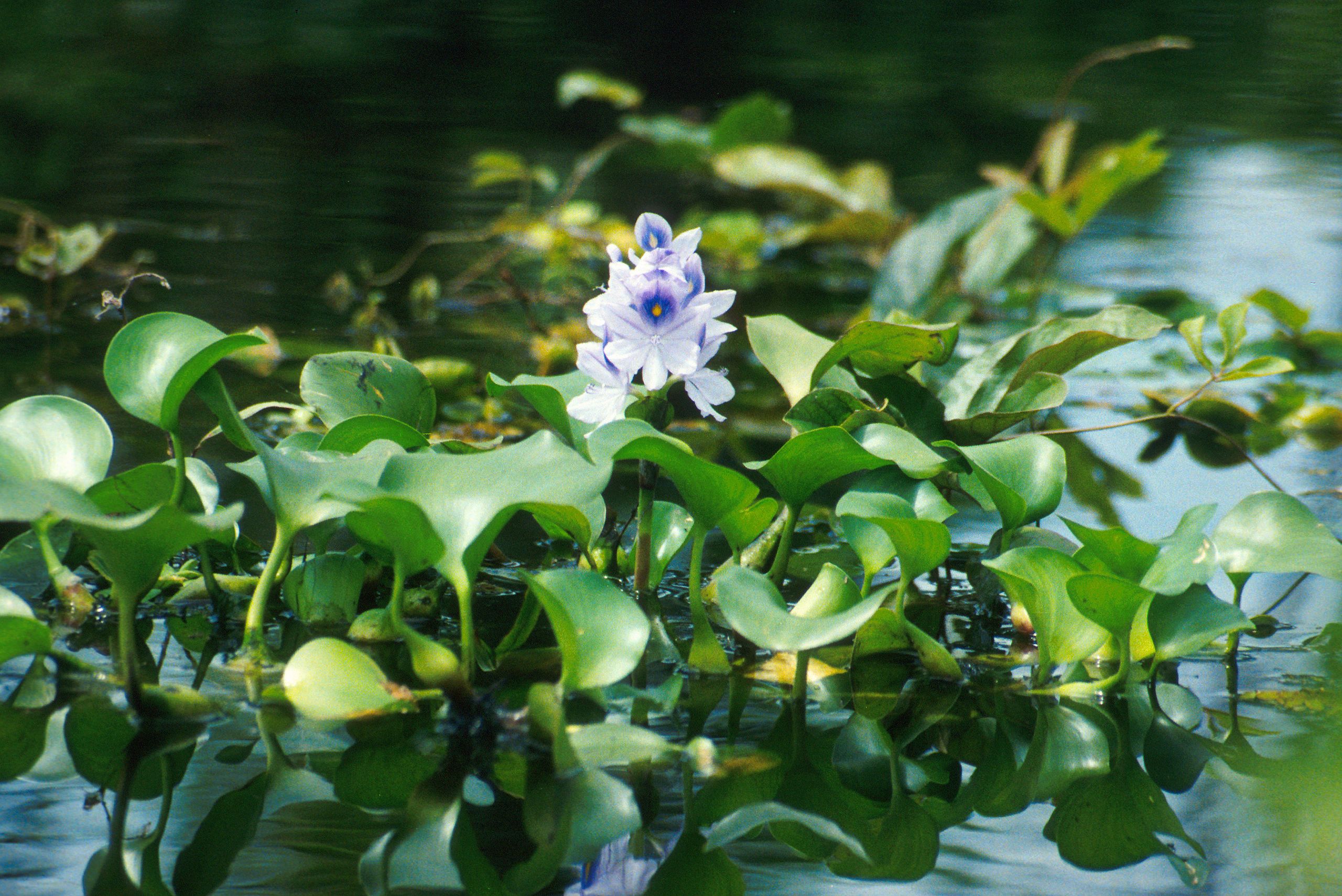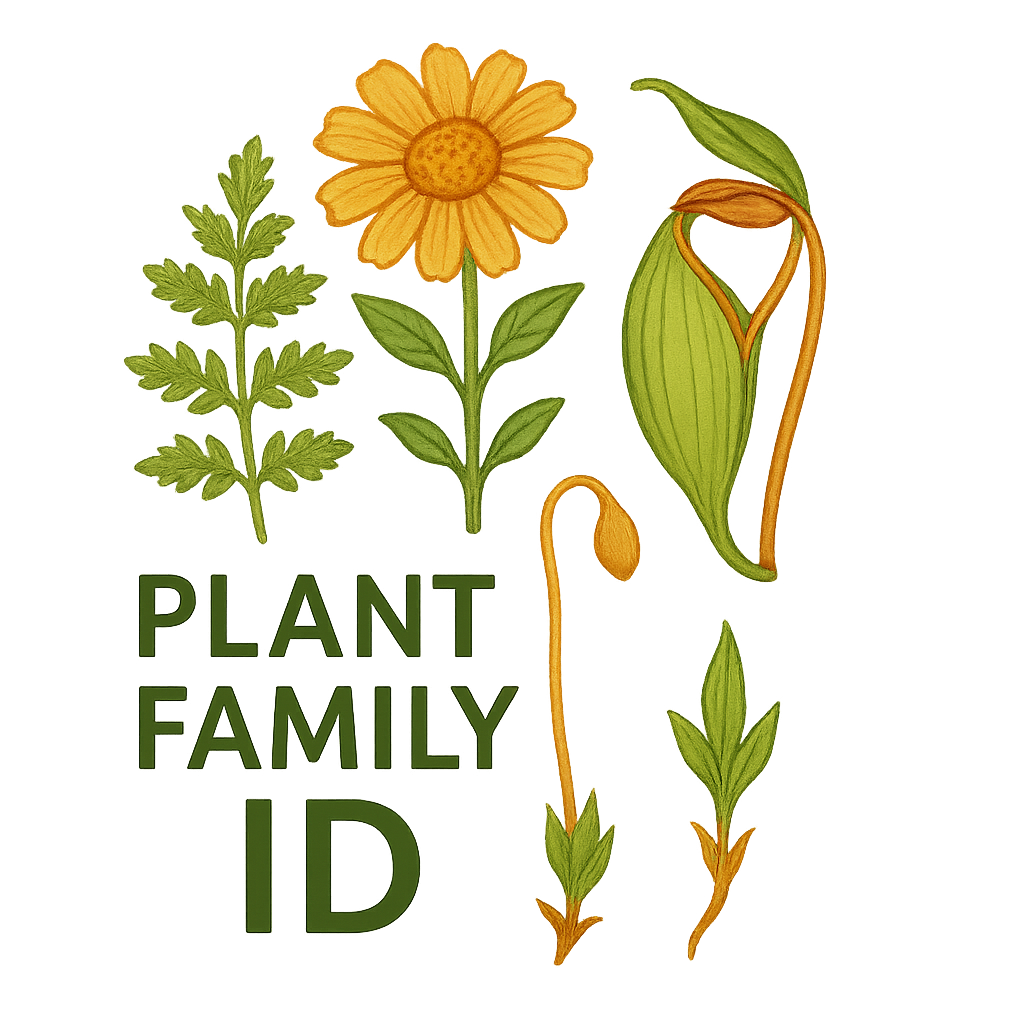Comandraceae
Bastard Toadflax Family
Comandraceae is a small family of herbaceous perennial plants in the order Santalales, containing 2 genera and 2 species. These plants are characterized by their simple, alternate leaves with entire margins, small, star-shaped flowers with 4-5 tepals, and distinctive drupe-like fruits. Distributed across North America with one species also found in Europe, they typically grow in dry to moist woodlands, prairies, and tundra. The family is notable for its hemiparasitic habit, attaching to the roots of host plants via haustoria to obtain water and nutrients, while still producing chlorophyll and photosynthesizing. Comandra umbellata (bastard toadflax) and Geocaulon lividum (northern comandra) are the only members of this small but ecologically interesting family.

Overview
Comandraceae is a small family of flowering plants in the order Santalales. The family comprises 2 genera, each with a single species: Comandra umbellata (bastard toadflax) and Geocaulon lividum (northern comandra). These herbaceous perennial plants are distributed across North America, with Comandra umbellata also extending into parts of Europe.
The taxonomic history of Comandraceae is relatively recent. The family was first described by Daniel L. Nickrent and Der in 2010, based on molecular phylogenetic studies that indicated these genera formed a distinct lineage within the Santalales order. Previously, both genera were included in the family Santalaceae (sandalwood family). The recognition of Comandraceae as a distinct family reflects the ongoing refinement of our understanding of plant evolutionary relationships through molecular techniques.
In the APG IV classification system (Angiosperm Phylogeny Group), Comandraceae is recognized as a distinct family within Santalales. It occupies a position within the order that reflects its evolutionary relationship with other families of parasitic and hemiparasitic plants.
Both members of Comandraceae are hemiparasitic, meaning they attach to the roots of host plants via specialized structures called haustoria to obtain water and nutrients, while still producing chlorophyll and photosynthesizing. This hemiparasitic habit is a characteristic feature of many members of the Santalales order.
Comandra umbellata, commonly known as bastard toadflax, is the more widespread of the two species, occurring across much of North America and parts of Europe. It typically grows in dry to mesic prairies, open woodlands, and other well-drained habitats. Geocaulon lividum, or northern comandra, has a more northern distribution, occurring in boreal forests, tundra, and other cool, moist habitats across northern North America.
Despite their parasitic habit, members of Comandraceae are not typically considered agricultural pests, as they generally parasitize a wide range of host plants and do not cause significant damage. They are primarily of ecological interest as components of their native ecosystems and as examples of the hemiparasitic lifestyle.
From an evolutionary perspective, Comandraceae is particularly interesting due to its position in the Santalales order, which includes a diverse array of parasitic and hemiparasitic plants with varying degrees of dependence on their hosts. The family thus provides insights into the evolution of parasitism in plants, a trait that has evolved independently multiple times across the plant kingdom.
Quick Facts
- Scientific Name: Comandraceae
- Common Name: Bastard Toadflax Family
- Number of Genera: 2 (Comandra and Geocaulon)
- Number of Species: 2 (Comandra umbellata and Geocaulon lividum)
- Distribution: North America, with Comandra umbellata also in parts of Europe
- Evolutionary Group: Eudicots - Santalales
Key Characteristics
Growth Form and Habit
Members of Comandraceae are herbaceous perennial plants:
- Typically growing to about 10-40 cm tall
- With rhizomes (underground stems) that allow for vegetative spread
- Often forming colonies or patches in suitable habitats
They typically grow in a variety of habitats, from dry prairies to moist woodlands to tundra, depending on the species. Both members of the family are hemiparasitic, attaching to the roots of host plants via haustoria to obtain water and nutrients, while still producing chlorophyll and photosynthesizing.
Leaves
The leaves of Comandraceae have several distinctive characteristics:
- Arrangement: Alternate along the stems
- Type: Simple, never compound
- Margins: Entire (smooth, without teeth or lobes)
- Shape: Typically lanceolate to elliptic
- Size: Relatively small, typically 1-5 cm long
- Texture: Often somewhat leathery or firm
- Venation: Pinnate, with a prominent midrib and less conspicuous secondary veins
- Color: Green to bluish-green, sometimes with a glaucous (waxy, bluish-white) bloom
- Stipules: Absent
The leaves are typically glabrous (smooth, without hairs) and often somewhat glaucous. The simple, alternate leaves with entire margins are consistent across the family and help distinguish it from some related families with different leaf arrangements.
Flowers
The flowers of Comandraceae provide key diagnostic features:
- Arrangement: In terminal cymes or umbel-like clusters
- Size: Small, typically less than 1 cm in diameter
- Symmetry: Actinomorphic (radially symmetrical)
- Perianth: 4-5 tepals (not clearly differentiated into sepals and petals), often white, cream, or greenish
- Shape: Star-like when fully open
- Stamens: 4-5, attached to the tepals
- Ovary: Inferior, unilocular (with a single chamber)
- Style: Simple, with a capitate or lobed stigma
The floral structure, particularly the star-shaped arrangement of tepals and the inferior ovary, is characteristic of the family and reflects its position in the Santalales order.
Fruits and Seeds
After pollination, the flowers develop into:
- Fruit type: A drupe-like structure
- Fruit shape: Typically somewhat globose (spherical) to ovoid
- Fruit size: Small, typically 5-10 mm in diameter
- Fruit color: Variable, often reddish, brownish, or purplish when ripe
- Seeds: Usually 1 per fruit
- Seed dispersal: Primarily by animals, particularly birds and small mammals that consume the fleshy fruits and disperse the seeds
The drupe-like fruits with a single seed are consistent features of Comandraceae and help distinguish it from some related families with different fruit types. In Geocaulon lividum, the fruits are particularly colorful and fleshy, resembling small berries.
Parasitism
A key feature of Comandraceae is the hemiparasitic habit of both species:
- Type of parasitism: Hemiparasitic (combining parasitism with photosynthesis)
- Attachment: Via haustoria (specialized structures that penetrate the host's tissues)
- Host attachment site: Roots
- Host specificity: Generally low, with the ability to parasitize a wide range of host species
- Degree of dependence: Facultative in many cases, with the ability to survive without a host, though growth may be reduced
The hemiparasitic habit is a significant feature that reflects the family's position in the Santalales order, which includes many parasitic and hemiparasitic plants. Both Comandra umbellata and Geocaulon lividum are capable of photosynthesis but obtain water and nutrients from their host plants via haustorial connections to the host roots.
Root System
The root system of Comandraceae has several notable features:
- Type: Fibrous, often with rhizomes (underground stems)
- Haustoria: Specialized structures that attach to and penetrate the roots of host plants
- Host range: Diverse, including trees, shrubs, and herbaceous plants, depending on the habitat
The haustorial connections to host plants are a key feature of the family's hemiparasitic lifestyle. These connections allow the plants to extract water, minerals, and some organic compounds from their hosts, supplementing what they produce through photosynthesis.
Distinguishing Features
Comandraceae can be distinguished from other plant families by a combination of:
- Herbaceous perennial habit
- Simple, alternate leaves with entire margins
- Small, star-shaped flowers with 4-5 tepals
- Drupe-like fruits with a single seed
- Hemiparasitic habit, attaching to the roots of host plants via haustoria
These features, particularly the floral structure, fruit characteristics, and hemiparasitic habit, make Comandraceae relatively easy to distinguish from unrelated families, though it can be more challenging to differentiate from closely related families in the Santalales order, particularly Santalaceae, from which it was separated.

Flowers and fruits of Comandra umbellata (bastard toadflax), showing the small, star-shaped flowers with 4-5 tepals and the drupe-like fruits, characteristic features of the Comandraceae family.
Identification
Field Identification Tips
Identifying members of the Comandraceae family in the field can be facilitated by looking for:
- Habitat: Herbaceous perennial plants growing in a variety of habitats, from dry prairies to moist woodlands to tundra, depending on the species.
- Habit: Low-growing plants, typically 10-40 cm tall, often forming colonies or patches.
- Leaves: Simple, alternate leaves with entire margins, often somewhat glaucous (with a waxy, bluish-white bloom).
- Flowers: Small, star-shaped flowers with 4-5 tepals, often white, cream, or greenish.
- Fruits: Small, drupe-like structures, often reddish, brownish, or purplish when ripe.
- Parasitism: Evidence of hemiparasitism, such as haustorial connections to the roots of nearby plants, though this may be difficult to observe without excavation.
The combination of simple, alternate leaves, small, star-shaped flowers, and drupe-like fruits, along with the hemiparasitic habit, is particularly useful for field identification.
Similar Families
Comandraceae may be confused with several related families:
- Santalaceae: Very similar and closely related, with some members having similar growth habits and hemiparasitic lifestyles. The distinction between these families has been clarified by molecular studies.
- Thesiaceae: Also includes hemiparasitic herbs, but typically has different floral structures and fruit characteristics.
- Viscaceae: Includes hemiparasitic plants, but they are typically aerial parasites (attaching to the branches of host plants) rather than root parasites.
- Loranthaceae: Also includes hemiparasitic plants, but they are typically aerial parasites with more showy flowers.
Distinguishing Features
The most reliable features for distinguishing Comandraceae from similar families include:
- Floral structure: The combination of small, star-shaped flowers with 4-5 tepals and an inferior ovary is characteristic.
- Fruit characteristics: The drupe-like fruits with a single seed are distinctive.
- Growth habit: The herbaceous perennial habit, with plants typically growing from rhizomes, helps distinguish from some related families with different growth habits.
- Parasitism: The hemiparasitic habit, attaching to the roots of host plants via haustoria, is a significant feature that reflects the family's position in the Santalales order.
For definitive identification, examination of the floral structure and fruits is often necessary, particularly to distinguish Comandraceae from closely related families in the Santalales order, especially Santalaceae, from which it was separated.
Notable Examples
The Comandraceae family contains 2 genera, each with a single species:

Comandra umbellata
Bastard Toadflax
A herbaceous perennial plant native to North America, with some populations also in Europe. It typically grows to about 10-30 cm tall and has simple, alternate leaves with entire margins, often with a glaucous (waxy, bluish-white) bloom.
The flowers are small, white to cream-colored, and star-shaped, arranged in terminal umbel-like clusters (hence the specific epithet "umbellata"). The fruits are small, drupe-like structures, typically brownish when ripe.
C. umbellata is hemiparasitic, attaching to the roots of various host plants via haustoria. It typically grows in dry to mesic prairies, open woodlands, and other well-drained habitats. The species has several recognized subspecies or varieties that differ in geographic distribution and some morphological features.
The common name "bastard toadflax" refers to the plant's superficial resemblance to true toadflax (Linaria species), though they are not closely related. The species has limited economic importance but is of ecological interest as a component of prairie and woodland ecosystems and as an example of a hemiparasitic plant.

Geocaulon lividum
Northern Comandra or False Toadflax
A herbaceous perennial plant native to northern North America, particularly Canada and the northern United States. It typically grows to about 10-40 cm tall and has simple, alternate leaves with entire margins.
The flowers are small, greenish to yellowish, and star-shaped, arranged in small clusters. The fruits are distinctive, fleshy, drupe-like structures that are bright red to orange when ripe, giving rise to alternative common names like "pumpkinberry" or "timberberry."
G. lividum is hemiparasitic, attaching to the roots of various host plants via haustoria. It typically grows in boreal forests, tundra, and other cool, moist habitats across northern North America. The genus name "Geocaulon" comes from the Greek words "geo" (earth) and "caulon" (stem), referring to the plant's rhizomatous growth habit.
The species is less common and less widely distributed than Comandra umbellata and is considered rare or threatened in some parts of its range. It is primarily of ecological interest as a component of boreal and tundra ecosystems and as an example of a hemiparasitic plant adapted to cold environments.




